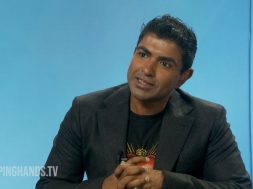
By: Michael McQueen
As we begin a new year, many of us will naturally turn our attention to what the coming 12 months hold.
Strategic plans will be crafted, budgets will be considered, calendar events will be plotted.
However, perhaps there is one activity we are too quick to rush over or perhaps fail to even consider at this critical time. Before you get too caught up in what needs to be done and how you should move forward, how clear are you on what your intention for the coming year is?
If there is one word that has the potential to revolutionize your results in the coming year, it is vision. While plans and strategies are important, here are 4 important things that only a clear and compelling vision can do for an organization or brand:
1. Vision Restores Inspiration
Vision has a unique ability to inspire energy, concentrate effort and garner commitment. The old proverb tells us that ‘Where there is no vision, people will perish’. Importantly, however, the reverse of this adage is also true. People and organizations will naturally flourish when a vision is both clear and compelling.
Most businesses and organizations start off with an inspiring vision for the future. In the early stages, aspirations are high, energy is boundless and challenges seem like little more than insignificant obstacles that need to be navigated.
Over time as things settle into a routine, however, sober realism begins to replace naive optimism. Possibility thinking gives way to probability planning. The inspiring ‘big picture’ gets crowded out as challenges and circumstances become all-consuming. Lethargy, despondency and fatigue creep in ever so slowly until they become the default operating mode.
The best way to break this cycle is by getting people to lift their eyes from the day-to-day and focus on the horizon instead.
Although the exercise of vision casting and goal setting is inspiring in and of itself, a vision cannot be so big that it seems implausible or impossible. A long-range vision may be energizing but short-range strategies are necessary for an organization to believe that the future can be different from the past. In short, a truly inspiring vision of the future will always be out of reach, but still within sight.
In a revealing example of the inspirational power of long-term vision coupled with short-term strategy, Dan and Chip Heath in their book Adapt share the story of a group of students in Howard, South Dakota, who set out to revive their dying community. After decades of declining employment in the farming and industrial sector, Howard’s median house price had sunk to $26,500 and the population by the mid-1990s stood at 3000 and was falling.
Having read in class about the death of similar regional communities in Iowa, the students started asking, ‘What can we do about this?’ They dared to envisage a future for their town that saw it thrive and flourish once more – a dream that perhaps only those with the benefit of youthful idealism and naïveté could have imagined.
Idealistic or not, the students’ vision sparked a sense of inspiration that had been absent from the community for years. Importantly however, the students’ long-range vision was underpinned with an action plan of short-term strategies. These included everything from a community-wide roster for clean-up days, to a simple economic calculation that showed that if residents spent just 10% more of their disposable income in the town, the local economy would grow by $7 million in one year.
Because the plan for turning around Howard’s fortunes appeared achievable, the support it garnered was huge. Twelve months later, the local economy had grown by $15.6 million, providing revenue to address other local issues. Within a few years, Howard began to attract new and innovative businesses and before long was a flourishing and vibrant community once more.
2. Vision Combats Inertia
In the same way that damaged or inefficient muscles in our bodies will heal naturally when blood flow and movement are restored, so it is with brands and businesses. When a team or organization has become dysfunctional or ‘stuck’, the best way to restore momentum, energy and vigor is to pump in new life by refocusing on a compelling vision for the future.
When an organization is idle or simply going through the motions, political power trips and destructive in-fighting bubble to the surface with incredible predictability. People lose perspective and small things are blown out of proportion. Just as a rolling stone gathers no moss, a business or organization that is on the move and going somewhere tends to be a place of incredible unity, harmony and focus. Further still, the great thing about forward movement is that it is generative: the more momentum you have, the more you gain. We all know that if you want something done; give it to a busy person. Well, the same principle applies in organizations.
In order for a future vision to unlock a business or brand from a state of inertia, it must be dramatic enough to create dissatisfaction with the status quo. Effective vision casting always elicits a response – it cannot be ignored.
When John Young was CEO of Hewlett Packard, for instance, he re-invigorated the organization by casting an expansive vision and setting unreasonable goals like:
- Producing laser-jet printers that could retail for less than one-third of the current price;
- Reducing by 50% the time it took for a project to go from idea to market release.
These ‘unreasonable’ goals, though initially met with resistance, had an electrifying effect on the organization. HP employees were forced to think outside the box and amazingly managed to achieve every one of Young’s goals in record time.
3. Vision Shapes Culture
By the end of the 1980s, Whirlpool had become the world’s largest manufacturer and marketer of household appliances. Six years later however, it was quite a different story. As sales began to level off and Whirlpool rapidly lost ground to its competitors, the company’s leadership decided to embark on an exercise in cultural transformation by casting a new five-word internal vision: Innovation comes from everyone, everywhere.
This dramatically shifted the way that company’s employees viewed their role and responsibilities. Creativity and innovation was now everybody’s job. Within a few years, Whirlpool had transformed itself from a traditional manufacturer to a customer-focused enterprise producing some of the most innovative products in the industry.
It was a similar story at Apollo Tyres in India. In 2005, the company was a relatively small tire manufacturer turning over $300 million a year in revenue. However, Managing director Neeraj Kanwar described that the company’s culture had become small-minded resulted in leaders “…constantly fighting fires and spending all our time on things that probably weren’t the best use of our time.”
During an offsite meeting with the company’s leadership, Kanwar challenged the group to chart out a path that would lead the company to it’s full potential. The meeting concluded with a clearly articulated vision: an audacious goal to grow almost 7-fold to $2 billion of revenue placing Apollo as one of the world’s top 15 tire companies. This vision inspired the team, saw a shift in focus from maintenance to growth, and renewed a commitment to empowering employees with the skills required to win. In short, the vision-casting exercise re-ignited energy and drive like nothing else could have.
Without doubt, culture change like that seen in Whirlpool and Apollo Tyres would never have occurred without a clear and compelling vision to set it in motion.
4. Vision Guides Decision-making
A strong sense of vision is critical if a company or brand is to stay relevant in the long run. After all, a clear conviction of where you are going is the best way to know when to say yes but, more importantly, when to say no to ideas and opportunities.
So as you consider what your vision for the coming year may be, I would urge you to reflect on the questions below:
- What would you set out to do if your success was assured?
- If a genie were to grant you three wishes for your organization, what would you ask for?
- What would you want others to be saying about you and your organization in 3-5 years?
- Who is where you would like to be? What is it that you admire about the success they are achieving?
- What would represent a bitter and disappointing failure in five years’ time – and what would the opposite look like?
Article supplied with thanks to Michael McQueen.
About the Author: Michael is a trends forecaster, business strategist and award-winning conference speaker.
Feature image: Photo by Jonas Leupe on Unsplash









